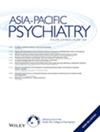Suicide prevention in childhood and adolescence: a narrative review of current knowledge on risk and protective factors and effectiveness of interventions
Abstract
Introduction
Suicide is a global mental health problem for people of all ages. While rates of suicide in children and adolescents are reported as lower than those in older populations worldwide, they represent the third leading cause of death in 15–19-year-olds. The rates are higher among boys than girls worldwide, though the death rates for girls exceed those for boys in Bangladesh, China, India, and Nepal. There has been a general decrease in adolescent suicide rates over recent decades. However, increases are reported in South East Asia as well as South America over the same time period.
Methods
A narrative review method has been used to summarize current knowledge about risk and protective factors for suicide among children and adolescents and to discuss evidence-based strategy for suicide prevention in this age group.
Results
Identified suicide risk and protective factors for children and adolescents largely overlap with those for adults. Nevertheless, developmental characteristics may strengthen the impact of some factors, such as decision-making style, coping strategies, family and peer relationships, and victimization. The implementation of evidence-based suicide preventive strategies is needed. Restricting access to lethal means, school-based awareness and skill training programs, and interventions delivered in clinical and community settings have been proven effective. The effectiveness of gatekeeper training and screening programs in reducing suicidal ideation and behavior is unproven but widely examined in selected settings.
Discussion
Since most studies have been conducted in western countries, future research should assess the effectiveness of these promising strategies in different cultural contexts. The use of more rigorous study designs, the use of both short- and long-term follow-up evaluations, the larger inclusion of individuals belonging to vulnerable groups, the evaluation of online intervention, and the analysis of programs' cost-effectiveness are also required.

 求助内容:
求助内容: 应助结果提醒方式:
应助结果提醒方式:


